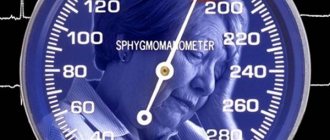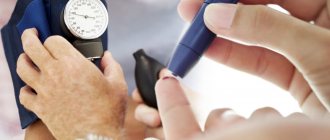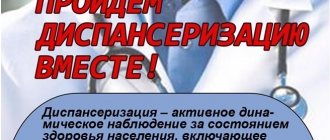Arterial hypertension (hypertension) is persistently high blood pressure. The majority of patients suffer from essential hypertension (hypertension accounts for 90 to 95% of cases); in other cases, symptomatic, secondary arterial hypertension is determined: endocrine, neurological, stress, renal, hemodynamic and others. Arterial hypertension is a common pathology of the cardiovascular system, most often affecting people over 40 years of age, and the number of cases increases with age.
One of the complications of arterial hypertension is a hypertensive crisis, during which an exacerbation of the symptoms inherent in arterial hypertension occurs.
Cardiologists and therapists at the Yusupov Hospital treat hypertensive crisis. The hospital doctors carry out rapid relief of a hypertensive crisis with the help of modern medications, prescribe an examination to determine the cause of the crisis - a cardiologist refers for an examination of the heart, the condition of the fundus, and diagnostics of kidney function.
The Yusupov Hospital is equipped with innovative medical equipment for diagnostic studies, and Holter monitoring of blood pressure and heart function is carried out. The hospital includes a clinical laboratory, a diagnostic center, a hospital, several multidisciplinary departments, a rehabilitation center, and care for seriously ill patients is provided in the intensive care ward.
Why does hypertension develop?
Various factors contribute to the development of hypertension; very often patients are unaware of their disease until the first hypertensive crisis.
Most often, hypertension develops in people who work night shifts and have heavy physical and psycho-emotional stress. In the development of the disease, hereditary predisposition, intrauterine development disorders, birth injuries, as well as various external factors are of great importance: climate, unbalanced nutrition, work in harmful conditions, harsh ecology, personality traits and psyche, and the ability to build relationships with people.
A hypertensive crisis is a violation of the mechanisms of blood pressure regulation, which occurs abruptly, causing circulatory disorders in the organs. There are two types of crises: hyperkinetic (at the early stage of arterial hypertension) and hypokinetic (at a late stage of the disease, against the background of initial high blood pressure). A hyperkinetic crisis develops acutely, is accompanied by severe symptoms of the disease, and adrenaline predominates in the blood. The hypokinetic crisis is less acute; norepinephrine predominates in the blood. The diagnosis of “hypertensive crisis” is made based on several indicators:
- High rise in blood pressure.
- Sudden onset of crisis.
- Symptoms of cardiac, cerebral and vegetative nature.
Aortic aneurysm dissection
It is the most dangerous and destructive consequence of a hypertensive attack. Manifested by rupture of the aorta under the influence of high blood pressure. Blood penetrates under the walls of blood vessels, increasing tissue separation. When all three vascular layers are dissected, rapid massive bleeding occurs, which in 25% of cases ends in death.
Degrees of aortic aneurysm dissection
The initial sign of the formation of aortic dissection is pain localized in the chest. The pain becomes “tearing” in nature, lasting from several minutes to several hours.
An uncontrolled increase in blood pressure is a dangerous condition for the body, as it has many negative consequences. Severe acute brain and cardiac disorders can be fatal. The prognosis for the course of complications depends on the initial level of pressure, the nature of functional disorders, as well as the timeliness of medical care.
Symptoms
During a hypertensive crisis, blood pressure rises sharply, and the symptoms of arterial hypertension worsen. Blood pressure can rise to 180/110, 230/130 and higher.
A certain part of patients with arterial hypertension get used to high blood pressure and practically do not feel a blood pressure of 200/110, feel only a slight malaise, and continue to perform their duties.
A hypertensive crisis is characterized by a sharp increase in blood pressure, which is accompanied by severe headache, nausea, vomiting, tinnitus and other symptoms.
Often the development of a hypertensive crisis is preceded by certain symptoms:
the patient cannot sleep, worries, feels depressed, and gets irritated for no reason. Then the minimum and maximum pressure increases over a short period of time, and a headache of varying intensity begins to bother you.
During a hypertensive crisis, brain symptoms appear:
nausea and vomiting, severe headache. Such manifestations indicate increased intracranial pressure. Headache can occur in the area of the back of the head, crown, temples, forehead, and a feeling of numbness of the skin in the area of the back of the head and neck. The pain can be throbbing, dull, sharp, paroxysmal, or constant. This may indicate a cerebral circulatory disorder.
Some of the most common symptoms of a hypertensive crisis
– this is pain in the heart area, a feeling of squeezing, severe shortness of breath, arrhythmia. The pain may radiate to the shoulder blade, left arm, and be accompanied by nausea. During a hypertensive crisis, pain may occur in the abdominal area, and the patient often begins to limp. A hypertensive crisis is characterized by symptoms of disruption of the autonomic and central nervous systems: severe irritability appears, the patient is excited, red spots are visible on the skin of the neck and chest, the skin becomes moist. Chills begin, body temperature rises, and muscle tremors bother you.
In some cases, depression of the nervous system occurs and the patient becomes lethargic, indifferent, and constantly sleeps. A hypertensive crisis with a sharp depression of the nervous system can be accompanied by muscle twitching and cramps; the patient is in a coma between attacks. The patient develops speech disorder and decreased sensitivity of the limbs. Disorders of the cardiovascular system manifest themselves in the form of a variety of symptoms:
- Tachycardia or bradycardia
- Heart rhythm disturbances
- Muffled heart sounds, congestive wheezing in the lower parts of the lungs
- The ECG shows depression of the ST segment and flattening of the G wave - signs of systolic overload of the left ventricle of the heart.
During a hypertensive crisis, the appearance of red blood cells and protein in the urine is noted, and blood circulation in the kidneys deteriorates.
Reasons for the development of complications
Critical arterial hypertension occurs against the background of spasm of small-diameter vessels that provide blood flow to larger arteries. This process causes an increase in peripheral resistance, as a result of which the number of heart contractions accelerates and the process of supply of nutrients to organs and tissues is disrupted. As a rule, the pathological process is localized in the following organs:
- brain;
- myocardium;
- kidneys;
- optic tract.
Organs undergoing pathological changes after a crisis
The vascular system of these organs undergoes spasm, which causes an acute oxygen deficiency, which results in irreversible ischemic damage. The angiotensin-renin-aldosterone system is activated, triggering uncontrolled pressure drops. The production of substances that help relax the smooth muscles of blood vessels is inhibited. Arterioles in a state of prolonged spasm undergo necrosis, as a result of which blood leaks through their damaged walls. The addition of a disorder of the coagulation system leads to the formation of blood clots.
Treatment
How to treat a hypertensive crisis, what medications to take is decided by the attending physician.
Medicines for a hypertensive crisis are selected individually for the patient, taking into account possible complications of antihypertensive treatment, decreased cerebral circulation and the development of ischemic stroke. Drugs for hypertensive crisis are prescribed depending on the symptoms. With severe symptoms of damage to the nervous system, a sharp decrease in pressure can worsen the patient's condition. Drugs that have a moderate hypotensive effect are used.
In case of hypertensive crisis in cardiac patients, ACE inhibitors are used. The use of certain drugs is contraindicated for cardiac patients - clonidine is not used for sick sinus syndrome, bradycardia, atrioventricular block (II-III), the drug is contraindicated for depression, acute myocardial infarction, severe encephalopathy. Eufillin is not used in patients with epilepsy, frequent extrasystole, or paroxysmal tachycardia. In case of acute left ventricular failure during a hypertensive crisis, patients are prescribed diuretics, which complement and enhance the hypotensive effect of drugs for hypertension.
If a complicated hypertensive crisis develops, intensive therapy is carried out with careful monitoring of heart rate, blood pressure, and an ECG is performed, which helps to timely determine the development of bradycardia, heart block and other complications. When symptoms of damage to the kidneys, heart, or brain appear, the patient is admitted to the intensive care ward, where he is given urgent care, medications are carefully selected and dosed. The main groups of drugs for the treatment of hypertension are ACE inhibitors, beta blockers, diuretics, alpha blockers, calcium channel blockers.
Algorithm of actions
As you already understand, a crisis can be called a complication of hypertension. Help is provided in this case as quickly as possible. First of all, you should call an ambulance. If a person is nervous or afraid, the person must be calmed down so that the pressure does not rise even higher. It is important to ensure air flow into the room, it is necessary to unbutton clothes, it is important that breathing is controlled and as smooth as possible. An emergency medicine for blood pressure should be placed under the tongue; Captopril or Nifedipine, as well as Copoten or Corinfar, help well.
If the ambulance does not arrive, and the person has become worse, you can take the medicine again. If pain or compression appears behind the sternum, you need to take Nitroglycerin. In case of chills, it helps to surround the person with bottles, into which warm water is first poured, and wrap them up. Often, upon arrival of the medical team, it becomes clear that hospitalization is not necessary. All measures are taken on site.
Signs of hypertensive crisis in women
Hypertensive crisis occurs more often in women than in men. The causes of hypertensive crisis in women are often associated with dysfunction of endocrine organs. Most often, a hypertensive crisis develops before menstruation and during menopause; the development of a crisis in women is greatly influenced by weather changes, stress, and increased consumption of table salt. Symptoms of a hypertensive crisis in women manifest themselves in the form of severe headache, dizziness, spots before the eyes, nausea and vomiting.
According to statistics, the highest prevalence of hypertensive crisis is in women. Most women do not turn to doctors for adequate treatment and take antihypertensive drugs from time to time. Low stress resistance, high psycho-emotional stress, work in harmful conditions, harsh environment lead to the development of diseases of the endocrine organs, hypertension, and the development of complications - hypertensive crisis.
Organic brain disorders
Hypertensive encephalopathy develops acutely when, against the background of a rapid increase in blood pressure, destruction of the internal vascular membranes occurs, accompanied by a violation of compensatory mechanisms. Excessive narrowing of the arterioles gives way to paralysis, their passive stretching occurs with a pronounced increase in the permeability of the capillary wall. Rapidly progressing vascular changes lead to the release of blood cells into the surrounding tissues in the form of plasmorrhages of various diameters. Brain edema forms with characteristic foci of ischemic destruction of nerve fibers.
The severity of the consequences of damage to nerve cells varies, since the nature of the disorders depends on the localization of the pathological process and the size of the ischemic damage.
Most manifestations become reversible, which depends on the timely elimination of tissue swelling and restoration of blood circulation. Necrosis of nerve cells may not affect brain function if the area of ischemia is small. As the number of dying neurons increases, symptoms will increase and persist after the attack has ended.
At the initial stage of hypertensive encephalopathy, manifestations are insignificant, and they are detected during diagnostic neurological tests. Subsequently, the symptoms become polymorphic, manifesting themselves in sensory, motor and cognitive disorders of varying severity.
Violation of automatic vascular regulation in patients with a long course of the disease occurs when systolic blood pressure is above 185-195 mm. Hg Art. In hypertensive patients with infrequent increases in blood pressure, disorders are registered at values of 145/95 mm. Hg Art.
Patients experience severe, unsystematic dizziness
The main signs of the development of brain pathology:
- Intense headache of a pressing nature, which, as the pain syndrome increases, spreads to the entire area of the head.
- Nausea ending in vomiting, which does not bring a feeling of relief.
- A sharp deterioration in visual function when swelling of the optic nerve is present.
- Convulsive seizures.
- Impaired consciousness in the form of stunning.
- Meningeal syndrome.
As a rule, these signs are classified as manifestations of a crisis state, but they indicate the involvement of the brain in the pathological process and the formation of swelling of the nerve fibers. In the absence of timely therapy, the clinical picture progresses, and new ischemic lesions appear. Encephalopathy against the background of an arterial crisis can be a precursor to a stroke.
Signs of hypertensive crisis in men
A hypertensive crisis in men is most often provoked by alcohol abuse; in other cases, a hypertensive crisis can be caused by increased consumption of table salt, sudden weather changes in autumn and spring, active smoking, sudden refusal to take antihypertensive drugs, psycho-emotional stress, and drug use. Symptoms of a hypertensive crisis in men manifest themselves in the form of severe headache, pain in the heart, scapula, often manifested by facial swelling, irritability and anxiety.
Elderly men are more likely to develop a hypokinetic crisis, which manifests itself with cerebral symptoms. Such a crisis continues for several days and is characterized in most cases by an increase in diastolic pressure. The development of a symptomatic crisis associated with diseases of the kidneys and renal vessels is most often observed; the cause of the development of the crisis can be the beginning of cerebral edema.
First aid for hypertensive crisis
Relief of a hypertensive crisis is carried out depending on the severity of the patient’s condition and the presence of concomitant diseases. Before the ambulance arrives, the patient is given first aid. The patient should be in a supine position, blood pressure should be measured for hypertensive patients, and the pulse should be checked. When a crisis develops as a result of psycho-emotional stress, the patient is given tinctures of valerian, motherwort or a tincture of a collection of soothing herbs to drink, a window is opened to allow fresh air into the room, they are asked to take several deep breaths and exhalations, and the pressure is reduced with the help of a drug prescribed by the doctor. For severe chest pain, the patient is given nitroglycerin.
Preventive measures
The best prevention of a hypertensive crisis is awareness of the peculiarities of the occurrence of attacks, an understanding of how an increase in blood pressure occurs and the causes of this phenomenon.
Timely diagnosis and interaction with a doctor, following medical recommendations is an opportunity to prevent the development of crises of varying degrees. Hypertension can be controlled if:
- avoid drinking alcohol;
- stop smoking;
- reduce salt intake to 5 g per day;
- normalize body weight;
- adhere to antihypertensive therapy;
- reduce stress levels;
- avoid overwork.
Hypertensive crisis: diagnosis
Diagnosis of a hypertensive crisis begins with examination and questioning of the patient. The doctor measures the patient’s blood pressure, sends him for a fundus examination, clinical urine and blood tests, an ECG, and if a stroke is suspected, the patient is sent for a CT scan. Computed tomography helps determine pathologies of brain tissue in layer-by-layer images of a three-dimensional model of the brain created by a tomograph. Examination of the fundus can reveal the presence of edema and hemorrhage.
At the Yusupov Hospital, treatment of hypertension and hypertensive crisis is carried out in the therapy department. Doctors use an integrated approach; in addition to drug therapy, the patient is prescribed a diet and selects an individual physical therapy program.
What to do if you are alone at home?
When a person is at home himself, it is not surprising that he is at a loss. It is important to take your medicine and open the front door. After this you call an ambulance. If you lose consciousness, doctors will be able to get into the house. The arriving team usually administers Dibazol, they use diuretics, and in case of significant tachycardia, beta blockers help. This is Inderal, or Rausedil and Obzidan.
You should definitely put Nifedipine or an analogue of Corinfar under your tongue. If the GC turns out to be complicated, then further measures are taken in the hospital. Sometimes ventricular failure occurs. If coronary insufficiency develops, the patient is placed in intensive care, where they try to relieve the pain. One of the most serious complications can be called a heart attack. This pathological condition requires resuscitation. It is necessary that the person is taken to the hospital as quickly as possible. This gives a chance to save the patient and minimize complications and their risks.







